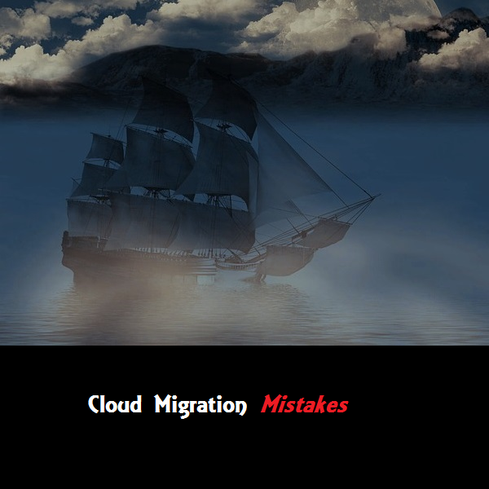AWS Emerges As Goliath As Cloud Competition FadesAWS Emerges As Goliath As Cloud Competition Fades
With AWS showing fat profit margins after 40% price cuts last year, Amazon competitors must be wondering how they're going to compete.


10 Cloud Migration Mistakes To Avoid
10 Cloud Migration Mistakes To Avoid (Click image for larger view and slideshow.)
Last week was a watershed one for cloud computing. It might be called the week of "cloud consolidation." Or maybe "an Amazon shake-out" might be a better term.
Dell, EMC, and VMware combined forces to offer a joint cloud approach around EMC's Information Infrastructure, EMC Virtustream, and VMware's vCloud Air. The combined effort will be headed up by Rodney Rogers, former CEO of Virtustream, a cloud service provider acquired by EMC last May for $1.2 billion.
Oh yes, HP announced it was bowing out of public cloud services altogether. Rackspace previously shifted its emphasis back toward managed services; it still maintains a public cloud service.
IBM, Microsoft, Google, and Amazon, on the other hand, announced they were witnessing big increases in cloud revenues. It was Amazon's third quarter report that was by far the most convincing.
The cloud market appears to be consolidating around three or four primary suppliers at a faster rate than the technology markets that preceded it, including the mainframe market, the Windows/x86 client/server market, and the smartphone/smart device market. The pace of Internet time is once again manifesting itself.
Since 2006 when Amazon Web Services launched, we have gone through dozens of potential suppliers and are down to four with the legs to keep running -- Amazon, Microsoft, Google, and IBM, from a North American perspective.
In its results for the third quarter, IBM said it had $9.4 billion in cloud revenue for the preceding 12 months. I've questioned in the past how much of this revenue came from highly automated, scalable services, like Amazon's, versus consulting, legacy system migration, and constructing on-premises private clouds for enterprises. I have an answer: $4.5 billion from services, based on an annual run rate of the third quarter, this time, of course, projected 12 months forward.
The best case for IBM is that less than 50% of its cloud revenues are coming from highly automatable, scalable services such as Bluemix and SoftLayer. In the long run, that's going to make it hard to compete with Amazon, which has 100% of its cloud revenues in that highly profitable category, or close to it. (One non-service example: It leases a cloud data moving appliance that is a physical device.)
Google CEO Sundar Pichai pronounced cloud services "an exceptional opportunity. Every business in the world is going to run on cloud eventually." No argument with that here, but be that as it may, I still think Google's profits are coming primarily from search advertising.
Truly surprising were the fat profits and generous margins that could be seen in Amazon's AWS unit. In the third quarter it ran up $521 net income on $2.1 billion in revenues, displaying a 25% profit margin.
{Image 1}
That's after a set of price cuts in March 2014 forced on Amazon by Google and Microsoft. To match them, Amazon lowered the price of the popular m3.medium virtual server from $.113 to $.07 and prices on other instances by as much as 40%. It drove down pricing on various storage configurations from 35% to 65%. Amazon hadn't initiated the cuts, but it illustrated that it was willing to match those of any other vendor. It may have been a lesson worth teaching. So far, Google and Microsoft haven't repeated the process.
But what must be truly depressing to the competition is the 25% margin shown by AWS a few months later as it continues to add customers and show a profit.
Microsoft in its quarterly report said it had doubled its cloud revenues. Bloomberg reported that cloud revenues are the only segment of Microsoft that's growing. Microsoft is in the cloud business to stay, but even so, its attention and resources are spread out over its Windows and Office franchises, and involved in keeping its enterprise Windows Server customers happy with products like Systems Server.
Amazon is demonstrating a determination not only to achieve a dominant position, but also to continue to use the pricing strategy that got it there. IBM never had a low-price strategy, and it certainly didn't cut prices 40% after achieving a dominant position. But the mainframe was a different era.
Amazon is where it is mostly because it keeps using cloud technologies to hand off more power to the customer. Its goal now is to hand off increasingly sophisticated services that end-users can self-provision and self-manage. Its call for database migrations to the cloud is just the start. Many more enterprise IT functions are likely to follow.
[Want to learn more about how EMC bought a cloud supplier in May for $1.2 billion? See EMC Buys Virtustream To Expand Its Cloud Offerings.]
Google, Microsoft, and IBM don't have the same knack for this, although Azure under Satya Nadella and Azure CTO Mark Russinovich may be warming to the task.
The prospect before us is not just that a market shakeout is occurring on Internet time or that we can clearly see the last three or four suppliers. The prospect is that dominance in the cloud is so big an advantage that there may not be a marketplace of three or four North American competitors. Dominance in the cloud may lead to a mega-sized, global company of ultra-national, if not supernatural, proportions.
Perhaps it's time to ask whether Alibaba or some other mega-company from some other part of the world will be able to emerge as the only real competitor to Amazon.
About the Author
You May Also Like






